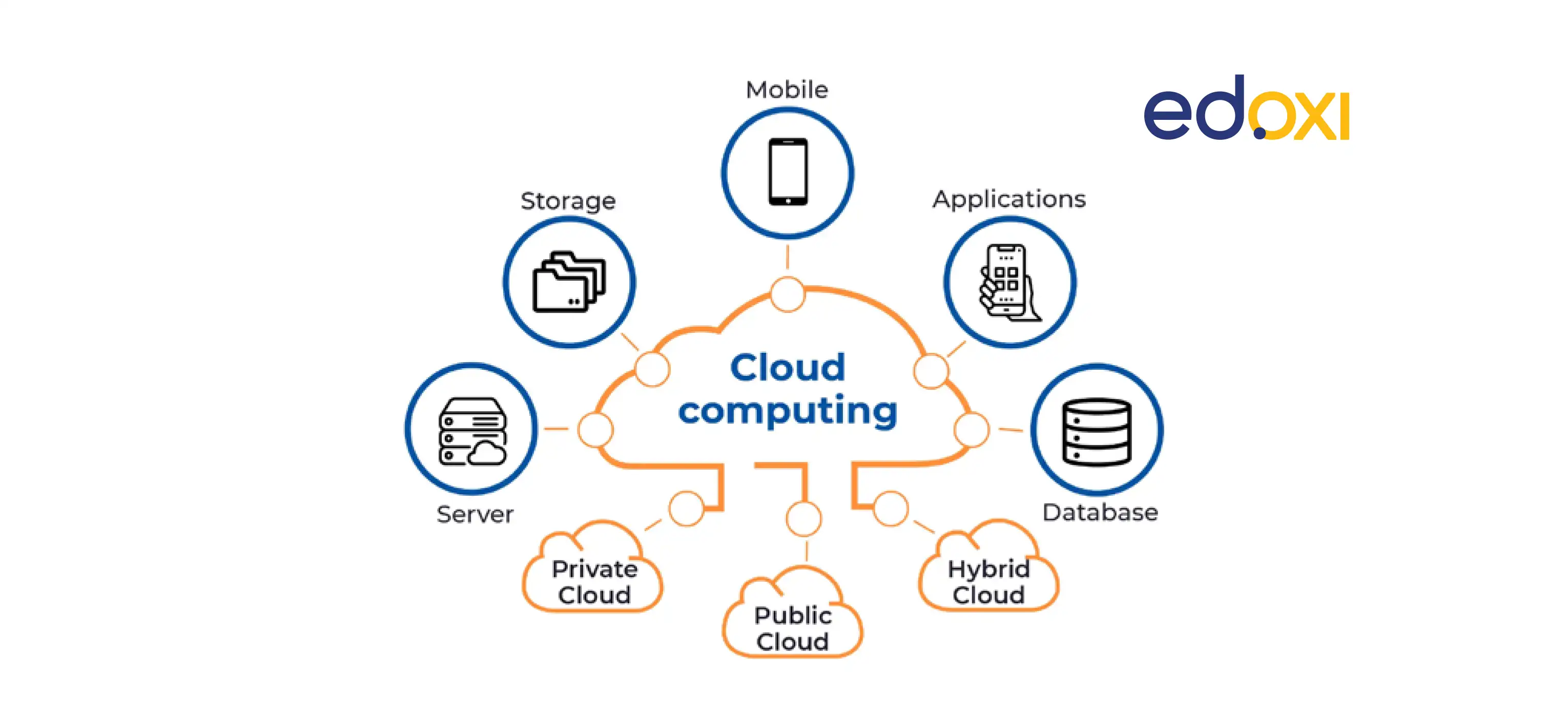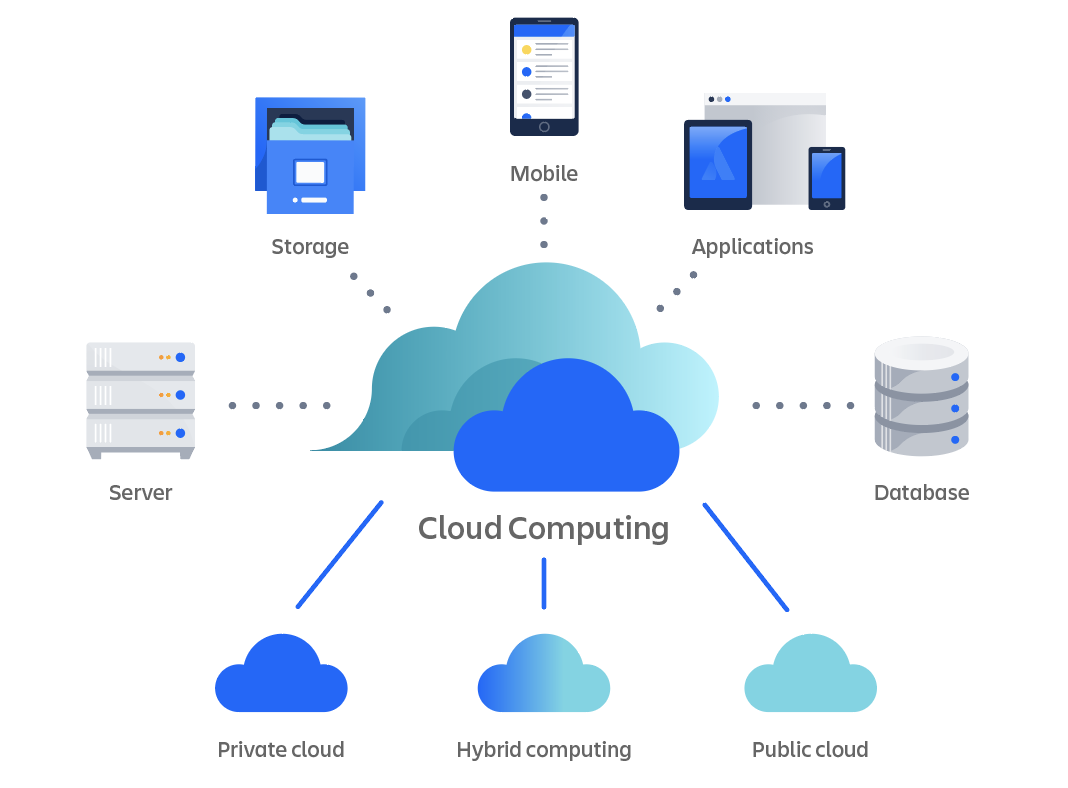Drive Innovation: Harnessing the Power of Cloud Solutions
In the hectic landscape of contemporary service, taking advantage of the power of cloud services has become an essential component for organizations intending to drive technology and maintain a competitive edge. The capacity to scale resources dynamically, adopt cutting-edge innovations seamlessly, and enhance advancement processes efficiently can significantly influence a company's capability to innovate and adjust. As we discover the elaborate relationship in between cloud services and innovation, fascinating insights on how cloud options reinvent conventional business methods and pave the way for groundbreaking advancements will certainly be revealed.
Advantages of Cloud Solutions
Cloud services provide numerous benefits to people and companies seeking adaptable and effective services for their digital demands. One of the vital benefits of using cloud services is the cost-effectiveness they give. By moving to the cloud, companies can eliminate the demand for costly on-premises equipment and maintenance expenses, rather selecting a pay-as-you-go version that lines up with usage. This scalability permits companies to adjust resources based upon demand, causing ideal price management.
Additionally, cloud solutions boost availability and cooperation amongst groups. With data stored in the cloud, employees can safely access data and applications from anywhere with a web link, advertising remote job capacities and boosting productivity. Real-time collaboration functions make it possible for numerous customers to deal with files all at once, cultivating smooth teamwork regardless of physical place.
An additional benefit of cloud services is the improved data protection and calamity recuperation they supply. Cloud suppliers apply innovative security measures to safeguard data from cyber dangers, making sure compliance with industry policies. Additionally, automatic back-ups and healing options minimize the danger of information loss because of unforeseen events, giving peace of mind to users.
Cloud Migration Approaches
Transitioning to cloud services includes thorough planning and tactical execution to make certain a smooth and effective movement procedure. There are a number of cloud migration strategies that organizations can think about when moving their operations to the cloud. One usual method is the 'Rehost' strategy, where applications are raised and changed to the cloud with very little changes. This method is fast however may not fully maximize cloud benefits. The 'Replatform' strategy entails making some cloud optimizations throughout migration, such as upgrading the application design to make use of cloud-native features. cloud services press release. For a more comprehensive makeover, the 'Refactor' method involves rearchitecting applications to be cloud-native, enhancing scalability and efficiency. Additionally, the 'Repurchase' approach entails changing existing software application with cloud-based choices, while the 'Retire' method involves deactivating redundant applications. Picking the best movement technique relies on aspects like cost, timeline, and wanted outcomes, calling for a cautious evaluation of each alternative's benefits and obstacles.
Enhancing Cooperation in the Cloud
Enhancing group cooperation via cloud-based tools can substantially enhance productivity and improve interaction within companies. By leveraging cloud solutions, teams can work together seamlessly regardless of their physical places, enabling real-time cooperation on projects.

Protection Considerations for Cloud Fostering
Exactly how can organizations make sure the robust protection of their data when taking on cloud services? Safety and security factors to consider are paramount in the fostering of cloud services. To secure data, organizations must first perform a complete risk evaluation to identify prospective susceptabilities and threats. Carrying out strong file encryption techniques for data both in transit and at rest is vital. Gain access to control devices ought to be implemented to restrict unauthorized access, and multi-factor authentication can add an added layer of security. Regular safety audits and surveillance of the cloud environment help in identifying and mitigating any type of safety violations promptly.

Cloud-Native Development Practices
In the world of cloud computing, embracing cloud-native technology practices is critical for companies aiming to maximize their digital infrastructure and improve operational performance. Cloud-native development practices entail establishing applications specifically for cloud atmospheres, leveraging the scalability, flexibility, and agility that cloud solutions offer. Deliberately applications with cloud-native principles in mind, such as microservices style, containerization, and orchestration, organizations can enhance their growth processes, boost resource usage, and react better to changing market demands.
Moreover, cloud-native development methods advertise constant assimilation and continual shipment (CI/CD) pipelines, making it possible for automated screening, implementation, and tracking of applications. This iterative strategy fosters faster technology cycles and enhances total software program quality. Furthermore, the usage of serverless computer and managed services allows organizations to focus on developing core company performances while offloading facilities management tasks to cloud company.
Fundamentally, welcoming cloud-native technology techniques encourages companies to drive advancement, speed up time-to-market, and stay competitive in today's swiftly advancing electronic landscape.
Final Thought

As we check out the elaborate relationship between cloud services and innovation, fascinating understandings on exactly the original source how cloud options reinvent conventional business methods and lead the means for groundbreaking innovations will certainly be exposed. basics - Cloud Services
There are a number of cloud movement approaches that companies can think about when moving their operations to the cloud. Cloud-native innovation methods entail developing applications particularly for cloud settings, leveraging the scalability, flexibility, and agility that cloud solutions supply. Additionally, the use of serverless computer and took care of services allows organizations to concentrate on developing core company capabilities while unloading infrastructure management tasks to cloud solution carriers.
It is vital for firms to consider cloud migration techniques, improve cooperation in the cloud, and focus on security measures to guarantee successful adoption of cloud services and drive advancement within their company.